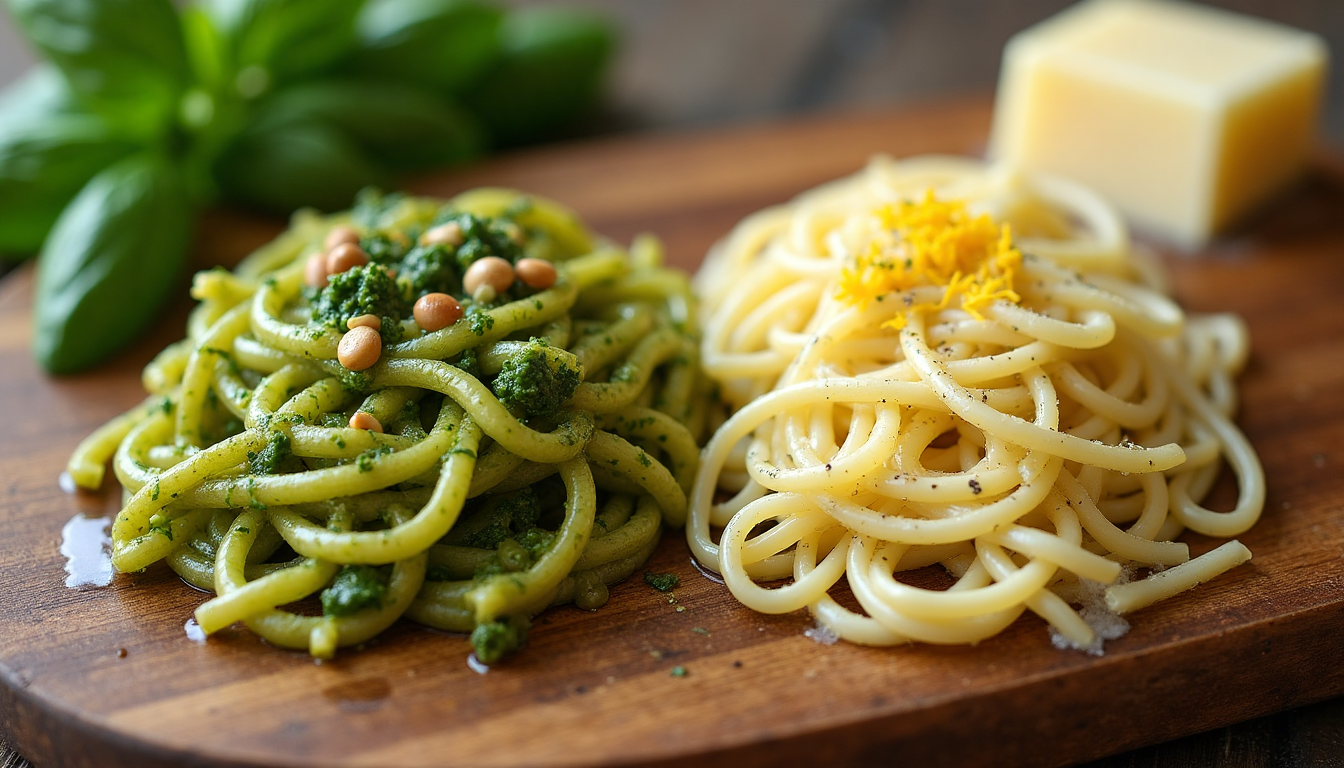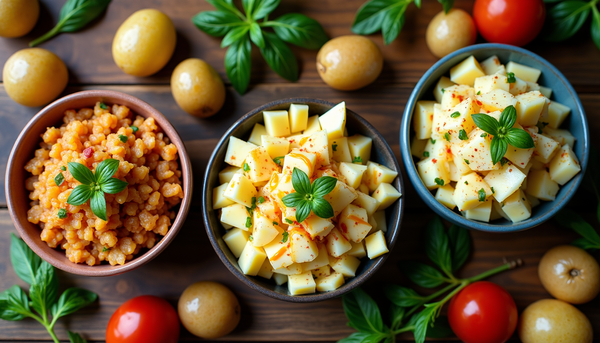Why I Ditched Traditional Pesto (And You Should Too)

Look, I need to confess something that might get me kicked out of every Italian grandmother's kitchen: I've basically stopped making traditional pesto.
Not because I don't love it – hell, I could eat pesto with a spoon – but because I discovered something that's honestly just... better for weeknight cooking. And before you come for me in the comments, hear me out.
The Problem with Pesto (That Nobody Talks About)
Traditional pesto is gorgeous, sure. But it's also kind of a pain in the ass. You need pine nuts (expensive and they go rancid if you look at them wrong), good olive oil (which can turn bitter when you blend it), and let's be honest – most of us are using that wilted basil we've been meaning to use all week.
Plus, pesto never seems to coat pasta quite right. It either clumps up in green globs or disappears entirely, leaving you with sad, under-sauced noodles.
Then I stumbled across this technique that changed everything: basil butter pasta. And not just any basil butter – we're talking about a method that turns six simple ingredients into something that'll make you question why you ever bothered with the traditional stuff.
The Science Behind Why This Actually Works
Here's the thing about fat and herbs that most people don't think about: butter is a way better vehicle for herb flavor than oil. Why? Fat distribution and temperature.
When you blend room-temperature butter with fresh herbs, you're creating an emulsion that melts into hot pasta water, creating an instant, silky sauce. The starchy pasta water helps everything bind together (this is crucial – save that pasta water, people). Meanwhile, traditional pesto just kind of... sits there, being oily.
The secret weapon here is blanching the basil first. Yeah, it's an extra step, but stick with me. Thirty seconds in boiling water, then straight into ice water stops the enzymes that make basil turn brown and bitter. Your sauce stays bright green and tastes like summer, even if you're making this in February with supermarket basil.
But here's where I diverge from the original recipe that went viral: lemon changes everything.
My (Probably Controversial) Modifications
The base recipe that everyone's obsessing over is just basil, butter, and pasta. Good, but basic. I've been messing with it for months, and here's what actually makes it sing:
Lemon zest and juice – This isn't optional anymore in my book. The acidity cuts through the richness and makes every bite feel fresh instead of heavy. Use the whole lemon. Trust me.
Garlic – Because we're not animals. Two cloves, minimum. Fight me.
Black pepper – Not just a pinch. Be generous. The heat plays against the butter in this incredible way.
Good Parmesan – And I mean good. Not the green can stuff. Get a chunk and grate it yourself. The salt and umami boost this thing into another dimension.
The controversial part? Sometimes I brown the butter first. I know, I know – it's not traditional, and it adds a step. But if you have an extra five minutes, the nutty depth it adds is ridiculous. Just let it cool to room temp before blending or you'll melt your food processor.
Where I Screwed It Up (So You Don't Have To)
Let me save you from my mistakes:
Mistake #1: Over-blanching the basil. I'm talking ten seconds max in that boiling water. I once left it in for thirty seconds and ended up with baby food-green mush. Still tasted fine, but looked like something a toddler would reject.
Mistake #2: Under-salting the pasta water. This is your only chance to season the actual pasta. The water should taste like seawater. If you're being precious about salt, this isn't the dish for you.
Mistake #3: Adding the basil butter to lukewarm pasta. The pasta needs to be hot enough to melt the butter on contact. I've served this lukewarm before and it's just... sad green globs on noodles.
Mistake #4: Wrong pasta shape. Long pasta works best here – bucatini, spaghetti, linguine. I tried this with penne once because that's what I had, and the sauce just pooled in the bottom of the bowl instead of coating everything.
The Method (And Why Each Step Matters)
Start by getting your biggest pot of water boiling. While that's happening, prep everything else because this moves fast once you start.
Blanch about 3 cups of packed basil leaves (remove the stems – they're bitter). Ice bath immediately. Wring it out like you're angry at it. This is important – water will thin your butter mixture.
Into the food processor: the blanched basil, 6 tablespoons of room-temperature butter, 2 cloves of garlic, zest of one lemon, about 2 tablespoons of lemon juice, salt, and stupid amounts of black pepper. Blend until smooth.
Salt your pasta water aggressively. Cook your pasta until it's just shy of done – it'll finish in the residual heat. Save a cup of pasta water before draining.
Here's the crucial part: add the basil butter to the hot pasta off the heat. Toss like your life depends on it. If it seems dry, add pasta water a tablespoon at a time until it's silky.
Why This Actually Matters
Look, I'm not trying to revolutionize Italian cuisine or anything. But this technique is a game-changer for people who want restaurant-quality flavor without the fuss. It's also way more forgiving than traditional pesto – no worrying about oil separation or bitter nuts.
Plus, you can make the basil butter ahead of time. I've started making double batches and keeping it in the fridge. It keeps for a week and turns any random pasta night into something special.
The best part? This is a framework, not a rigid recipe. Throw some leftover rotisserie chicken in there. Add cherry tomatoes. Toss in some arugula at the end. I've done versions with different herbs – parsley and chives work great together.
The Real Test
Make this once and tell me you're going back to regular pesto for weeknight dinners. I'll wait.
The first time I served this to friends, they literally asked for the recipe before finishing their plates. One guy – who claims to hate "fancy" food – went back for thirds and texted me the next day asking for the measurements again.
That's the thing about simple techniques done right: they don't need to be complicated to be absolutely delicious. Sometimes the best solution is just... better ingredients, better technique, same amount of effort.
So grab some basil (it's finally decent again at most stores), get that butter to room temperature, and try this. Your weeknight dinner rotation will thank you. And if you're feeling fancy, open a cheap bottle of wine and pretend you're at that little place in Rome where you had the best pasta of your life.
Because honestly? This might be better.




